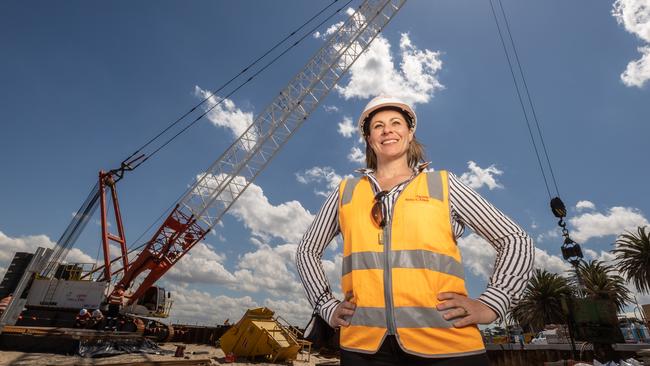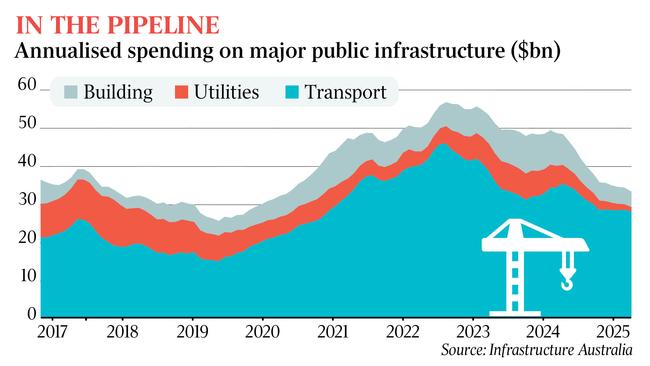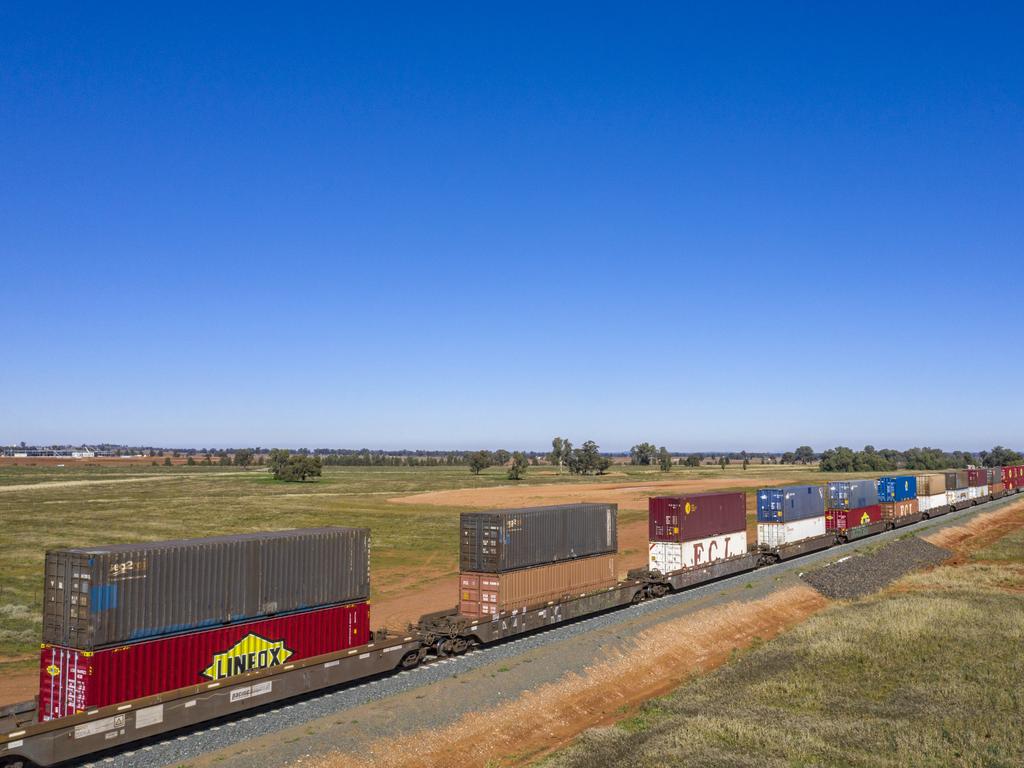Record $218bn public infrastructure pipeline at risk of delay and cost blowouts
Infrastructure Australia finds the nation lacks the skills and materials to cash in on a historic boom.

Australia lacks the skills, equipment and materials to deliver an unprecedented public infrastructure pipeline, putting a speed-limit on recovery from the pandemic recession, according to the first audit of the industry’s capacity.
Infrastructure Australia has assessed the demands of a record $218bn in taxpayer-funded construction over the next five years and concluded governments and businesses are not up to the task, risking delays and cost blowouts on road and rail mega projects.
IA’s Market Capacity Report details a doubling over three years in investment to a peak of $52bn in 2023, as governments around the globe compete for talent and stoke economies via the fast-acting multiplier of public works. IA found the yearly 30 per cent acceleration of investment “is beyond what the market has expressed confidence in being able to deliver”.
The “tidal wave” of work, as it is called by an apprehensive industry, will produce a two-thirds rise in demand for plant, labour, equipment and materials over the coming five years, with one-quarter of suppliers saying it was a “near impossibility” to cope with this crest.
The federal government’s key adviser also highlights how border closures and early retirement have exacerbated skills shortages.
By 2023, there will be 105,000 unfilled jobs in the sector or 48 per cent higher than projected supply.
The workforce strains are expected to be most acute in Victoria, Queensland and Tasmania, with IA setting out a reform program to address the looming deficits, including better project sequencing, training and digital-tool uptake.
Commissioned by Scott Morrison and first ministers in March last year, the report will dampen pre-election claims of a homegrown investment bonanza.
The Coalition touts a $110bn 10-year spending spree, while Labor is pushing a “Buy Australian” model. IA’s stocktake documents the chasm between grand ambitions and limited means.

Public infrastructure accounts for 20 per cent of construction activity and competes with private engineering, commercial and residential building for materials and workers. IA notes, globally, 75 per cent of road projects were delivered over budget; at 80 per cent, urban and high-speed rail had the greatest bent for cost overruns.
IA chief executive Romilly Madew said the capacity tool and research underscored “the need for a co-ordinated project pipeline to manage capacity constraints and provide confidence and certainty for both industry and government”.
“While infrastructure investment is rightfully a key component of our national Covid-19 recovery, we need to ensure we are equipped to deliver this once in a generation infrastructure spend,” Ms Madew said.
“The challenge of driving a step-change in infrastructure productivity and innovation is a shared one – it cannot be solved by governments or industry alone.”
Ms Madew said one of the markers of success of the capacity tool would be in attracting people into a sector where only 12.7 per cent were women, and where early retirement was the norm.
Chief executive of the Australian Constructors Association Jon Davies said governments needed to fix the causes behind a 25 per cent productivity gap that plagued the sector, high rates of insolvency and gender imbalances, and that it should be led by Canberra.
“Just halving the productivity gap means we could be getting an extra $15bn every year from the resources we’re now using,” Mr Davies told The Australian.
“Without addressing these underlying issues, there’s a real risk the pipeline won’t be delivered on time or the economic repair the government is counting on.”
Published on Wednesday, the report says Victoria, Queensland and Tasmania will experience the greatest risk of labour shortage: “At points between 2021-25, all three states will require a workforce that is approximately twice the size of projected supply available within their borders”.
As well, the report said migration would help address some workforce shortages but “it is unlikely to be sufficient to grapple with the demand for civil engineers, particularly in the face of global demand for these skills as countries around the world leverage infrastructure as part of post-Covid stimulus strategies”.








To join the conversation, please log in. Don't have an account? Register
Join the conversation, you are commenting as Logout